How to choose coffee beans suitable for Italian style? Do I have to deep-roast beans for espresso?
Professional coffee knowledge exchange more coffee bean information please follow the coffee workshop (Wechat official account cafe_style)
It is believed that many friends' first contact with coffee began with coffee drinks made from espresso. The lattes and American styles made by Qianjie espresso are very popular with fans. Many people will wonder if espresso must be made with deeply roasted beans. What beans would be more appropriate if you make espresso at home? does espresso have to be made with an espresso machine? In front of this article, let's talk about espresso.
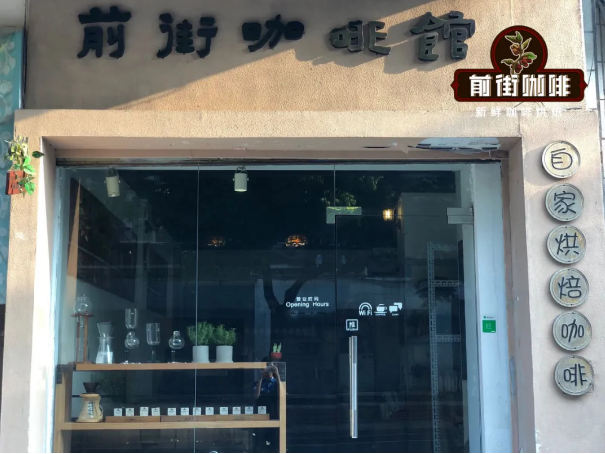
Espresso, short for Italian espresso. Espresso about 100 years ago, in the early 20th century, Luigi Bezzera from Milan invented a new steam-driven coffee brewing system. Because of the short brewing time of coffee, people decided to use the word "Espresso", the Italian word for "Express", to name it.
How can we judge the freshness of coffee beans before choosing any Italian coffee beans?
First of all, the selection of products should be clearly marked with the baking date (not the effective date or shelf life), brand reputation, emphasis on fresh roasting professional coffee roasters to choose and buy. In addition, excellent coffee bags are usually designed with a "one-way exhaust valve" (a button-shaped hole in the top of the coffee bag) for coffee beans to discharge naturally occurring carbon dioxide. Point the one-way exhaust valve at the nose, gently squeeze the coffee bag and smell the gas. If it is a charming and fragrant coffee aroma, the freshness will not be a problem. On the contrary, if it does not smell strong enough, or even smells of smelly oil, it means that this bag of coffee has already gone bad and should be avoided. Every packet of coffee beans sold in Qianjie Coffee is packaged with an one-way exhaust valve to ensure that each packet of coffee beans is in the freshest state to lovers. The reason why Qianjie puts so much emphasis on fresh baking is that with the passage of time, the coffee has been roasted for more than 50 days, there is basically no aroma. Well, some people will ask whether the coffee is as fresh as possible, nor is it that in the first two days of roasting, its aroma is not very stable.
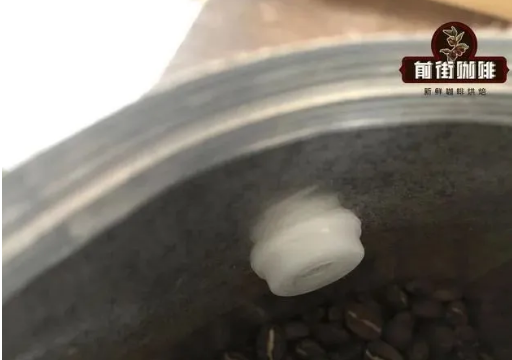
For espresso beans, due to medium and deep roasting, there is a large amount of carbon dioxide in the body after baking. Qianjie suggests that the original package should not be unsealed and placed in a cool and moistureproof place. Let the coffee beans grow in a still state (the process of releasing carbon dioxide from coffee beans) 7 days from the beginning of the baking date, and then cook.
Qianjie Coffee recommends making espresso with mixed espresso beans. Why?
Blended coffee, also known as mixed coffee and Italian coffee beans, is to mix all kinds of individual coffee beans together, so as to give full play to the strengths of various individual coffee beans, and the blended beans are made from coffee beans from different producing areas to make a more balanced taste. For example, if one kind of coffee bean is slippery but lacks aroma, another kind of coffee with rich aroma can be added to make the advantages of individual coffee beans complement each other, complement or strengthen each other in taste, thus creating a richer new taste of coffee. Sometimes the beans are mixed first and then baked, which is called roasting; sometimes they are roasted and then mixed with coffee beans, which is called cooked.
Whether it's pre-mixed raw beans, or baked individually and then mixed. Both methods are acceptable depending on the nature of the coffee in the formula. The mixture after baking provides different degrees of baking for each bean so that each ingredient shows the best effect. Qianjie Coffee should be reminded that before mixing beans, we should first know the flavor of different varieties of coffee in the world, and beans have different characteristics according to different producing areas, which requires roasters to be more clear about the characteristics of coffee beans in multiple producing areas, so as to adjust the baking curve. Different coffee beans have different personalities because of different varieties and producing areas, and there are subtle differences in sour, bitter, sweet, aroma, mellow thickness and other flavors. Single coffee beans often show the unique characteristics of a certain kind of coffee.
Qianjie Coffee currently has four espresso blends with beans on the shelves. Next, let's take a look at the differences between these four espressos.
1. [sunflower warm Italian Coffee beans] Honduras Shirley: Yega sun red cherries, ratio 6:4, cooked
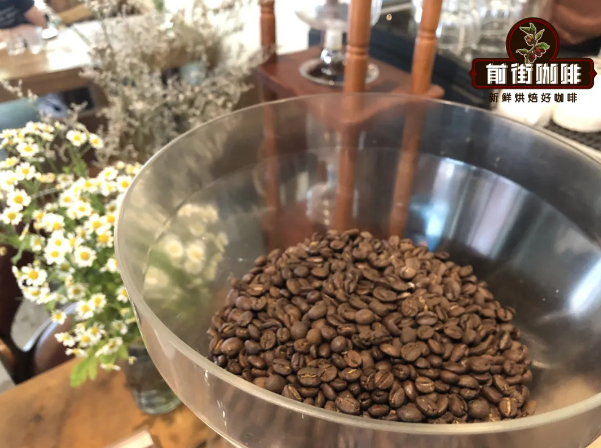
Flavor characteristics: it has obvious acidity, a hint of berry aromas, rich aromas of wine and chocolate, and a comfortable finish.
Shirley coffee beans give this coffee a strong whisky aroma and a heart chocolate finish. Sun red cherries bring a sense of fermentation to this coffee, with berry aromas and a smooth palate. This half-pound blend of warm sun coffee beans is suitable for coffee shops that require special espresso flavor and high quality beans, or for concentrated lovers who do not use much.
2. [Qianjie Coffee mix] Goran: Brazil, ratio 3:7, cooked
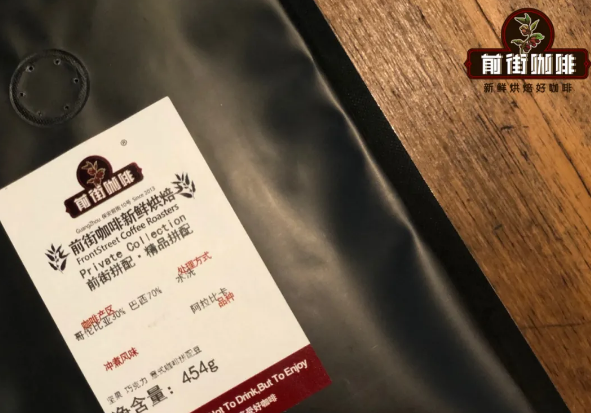
Flavor features: comfortable sweet and bitter taste, the entrance is very smooth, with a hint of grass, the fragrance is slightly bitter, smooth and smooth, the aftertaste can be pleasant.
The coffee beans in the Colombian Huilan area have a pleasant sour taste, mellow smell, moderate acidity, rich sweetness and intriguing sweetness, while the coffee beans in the Brazilian Hillado region have a comfortable bitter taste and a very smooth entrance. This boutique blended coffee is suitable for all kinds of boutique coffee shops.
3. [front Street Coffee Commercial mix] Colombia: Brazil: Robsta, ratio 3:6:1
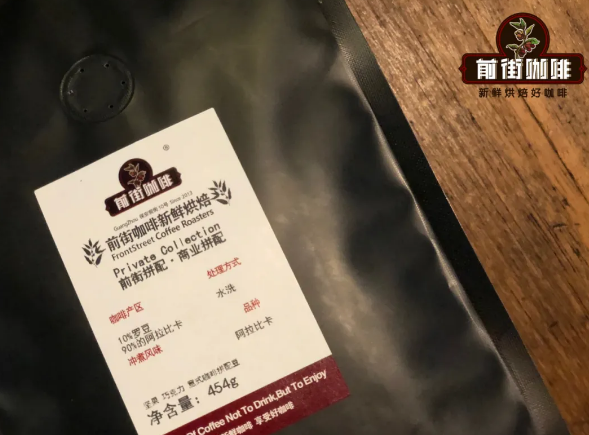
Flavor characteristics: classic taste, caramel sweetness, nutty and cocoa, dark chocolate flavor, sweet and sour balance, a little bittersweet, lingering finish.
The coffee beans in the Colombian Huilan area have a pleasant sour taste, mellow smell, moderate acidity, rich sweetness and intriguing sweetness, while the coffee beans in the Brazilian Hillado region have a comfortable bitter taste and a very smooth entrance. Robusta is rich in oil. This commercial blended coffee is suitable for coffee shops and beverage shops of all sizes.
4. [Qianjie Coffee basic mix] Yunnan AA: Brazil, ratio 3:7, cooked
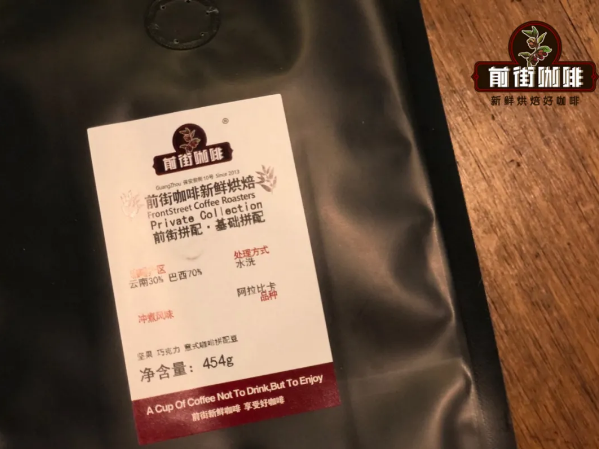
Flavor characteristics: with soft fruit acid, caramel sweetness, nutty, dark chocolate flavor, smooth and sticky, but light taste.
The natural conditions of Yunnan are very similar to those of Colombia, with high altitude, great temperature difference between day and night, mellow flavor, moderate sour taste, strong and mellow taste, uniform particles, more oil, and fruity flavor, and its quality and taste are similar to Colombian coffee. The coffee beans in the Hilado region of Brazil have a comfortable sweet and bitter taste, and the entrance is extremely smooth. This basic blend of coffee beans is suitable for small coffee shops or bakeries and beverage shops.
Mixing different coffee beans is mainly for the following purposes:
1. Stable flavor
Because coffee beans are a kind of crop, the flavor of even the same kind of coffee beans will be different from year to year, so mixing several kinds of coffee beans can solve this problem and keep the taste basically the same every year.
2. Balance the taste
Because one of the features of the Italian coffee machine is that it magnifies the most prominent flavor feature of coffee beans, we almost never use a single variety of coffee to make Espresso, otherwise if that coffee bean is bitter, the Espresso will be very bitter and sour. So we need to balance the flavors by matching them.
How to make espresso?
1. Espresso must be made with an espresso machine.
The most important thing to observe when buying an espresso machine is whether there is enough space between the filter handle and the dirty tray for your favorite mug. To produce a consistent quality espresso, your machine needs to be able to provide relatively consistent pressure-a standard espresso machine needs to be able to produce nine atmospheric pressures (bar). Ideally, the machine should allow you to set different temperatures according to your coffee, or at least maintain a stable and consistent temperature. If you want to make milk foam, you must be able to control the amount of steam produced by the machine. For this reason, please leave the machine with a single on / off button and choose a machine with a traditional controller or button. These are the key factors that can't be ignored if you can buy the right espresso machine.
two。 Selection of bean grinder
The Italian type bean grinder is characterized by extremely fine grinding, fast speed and large cutter head, and the uniformity is a hard index to judge whether the coffee bean grinder is easy to use, while the Italian type bean grinder is usually a very fine grinding degree that can not be achieved by other bean grinders.
The vertebral knife head type bean grinder is the most suitable for making espresso. Place a tapered cutter head at the bottom, and then grind it with the outer ring cutter head. After the coffee bean falls from the top, it will pull the coffee bean down as the conical cutter head rotates, resulting in grinding action, also because it is from top to bottom. Therefore, the particles do not need to push the coffee out, compared with the peace knife bean grinder, the number of collisions between the particles will be much less, so the proportion of fine powder produced by the cone knife will be much less than that of the flat knife, and the uniformity of coffee grinding will be greatly improved. The cone knife grinding particles will be close to granules, resulting in a longer water absorption path of coffee particles, and it takes longer for the interior to come into contact with water, so the cone knife particles will release less soluble matter at the initial stage, resulting in a concentration not too high in a short period of time. At the same time, because the shape is granular, even if extracted for a long time, the woody part of the coffee powder is less soluble in water and less prone to miscellaneous and astringent taste.
3. Cloth powder and pressing powder
The powder distributor can achieve the effect of mixing coffee powder, breaking agglomeration, evenly distributing particles, etc., but there are also some defects, such as wasting coffee powder, complicated tools, certain skills to operate, and more downward pressure when distributing the powder. may lead to internal cracks, just surface smoothing, distribution and thickness can not be guaranteed and other defects.
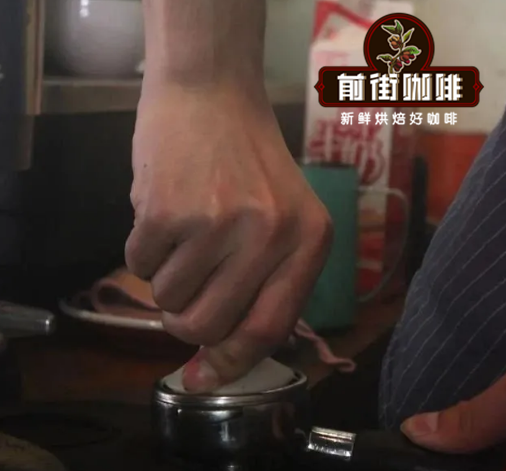
Pressing powder is to press the loose coffee powder with a powder hammer, so that the coffee pressed powder can have certain resistance when facing the water pressure of 9bar. If pressed powder is not pressed hard enough and flows too fast and too freely, the final espresso will show an unpleasant feeling of water; if pressed powder is pressed too tightly, the resistance of pressed powder is too strong, and it takes longer to immerse the water into pressed powder. The final extracted coffee is sticky and bitter. Generally, just concentrate your strength on the arm (15-25kg) and press it down. Gently hold the hammer with your hand and adjust the handle of the hammer until it seems to be an extension of your arm. Keep your wrists straight so that the bottom of the pink hammer handle is comfortably placed in the palm. This posture minimizes the pressure on the wrist.
4. Powder-water ratio
The golden ratio of powder to water in espresso is 1:2, that is, 20 grams of coffee powder, which brews 40 grams of espresso, but the powder-to-water ratio of espresso can vary greatly according to personal preference and regional characteristics, such as from 1:1 to 1:4. Qianjie Coffee, in order to highlight the aroma of whisky and chocolate of home-made warm sun mixed espresso beans, is concentrated in a single concentration using a ratio of 1 / 14 to extract 20g coffee liquid, which is equivalent to the extraction parameters of an essential concentrate. The two-part concentration uses the proportion of 1:2 to extract 40g coffee liquid.
5. Extraction temperature
Making espresso depends on the water temperature, pressure and time to dissolve the soluble solid substance (Soluble solids) in the coffee powder, but the water temperature is too high or the time is too long, it will cause over-extraction and make the coffee bitter! If the water temperature is too low or the time is too short, the coffee may be light and sour due to insufficient extraction. Generally speaking, the water temperature of about 90-96 degrees Celsius is used for extraction.
6. Extraction time
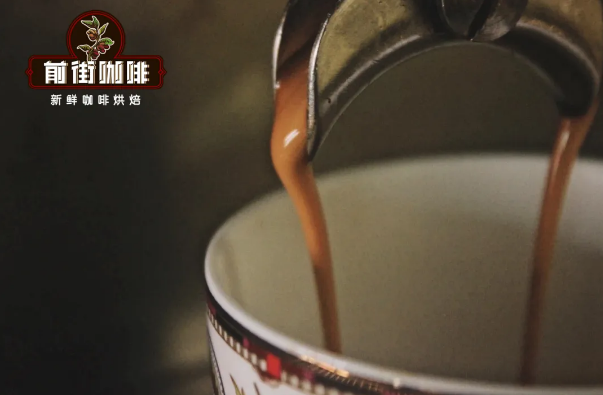
Cooking time also affects the taste of espresso, depending on the pressure / flow rate design of espresso equipment itself, powder bowl diameter / depth / hole design, powder quantity / fine powder and other factors. The gold extraction time is between 25-28 seconds, but the extraction time is actually a comprehensive performance of filling pressure, powder quantity and grinding degree, which needs to be adjusted by the barista's understanding of coffee beans.
Qianjie Coffee is currently making espresso using a blend of beans treated in sherry buckets and sun-treated Yegashifi red cherries. 60% of the Honduran sherry barrel coffee beans provide flavor and mellow thickness for this mixed bean, and 40% of the sun Yega Sheffield provides more aroma and acidity.
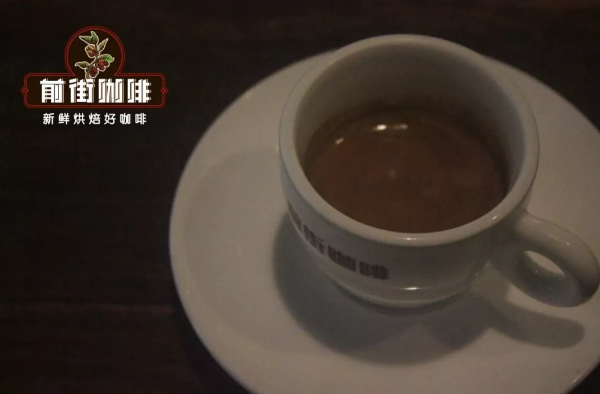
Qianjie concentrated extraction parameters:
Grinder: Pegasus 900N
Degree of grinding: 1.6
Pressure: 9 bar ±2
Temperature: 90.5 ~ 96 °C
Time: 20: 30 sec
Powder content: 20g (double espresso)
Extraction amount: 40ml
Extracted espresso flavor: smooth taste, medium mellow thickness, palate with obvious acidity accompanied by a hint of berries, whisky, strong chocolate flavor.
For more boutique coffee beans, please add private Qianjie coffee on Wechat. WeChat account: kaixinguoguo0925
Important Notice :
前街咖啡 FrontStreet Coffee has moved to new addredd:
FrontStreet Coffee Address: 315,Donghua East Road,GuangZhou
Tel:020 38364473
- Prev
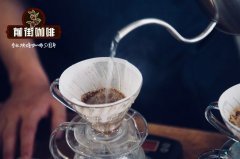
What is hand-made coffee? Does hand coffee produce grease? Make coffee by hand.
Professional coffee knowledge exchange more coffee bean information Please follow the coffee workshop (Wechat official account cafe_style). Speaking of coffee beans, they can be divided into light roasting, medium roasting and re-roasting. Coffee cherries are actually like fruits. Good coffee beans have fruity, floral, cocoa, nutty flavors, etc., usually the lighter the roast, the more sour they are, the more they can drink the essence of coffee beans; otherwise, the more roasted they are.
- Next
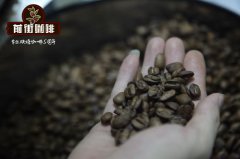
What is Italian matching? How to choose the combination of coffee beans? The difference between skilled spelling and living spelling is again
Professional coffee knowledge exchange more coffee bean information please follow the coffee workshop (Wechat official account cafe_style) what is mixed coffee single coffee refers to a single variety, single origin, or single roasted coffee beans. Blended coffee refers to coffee beans of different varieties, different producing areas, or different roasting degrees, which are generally composed of 2 or 5 kinds of coffee beans according to a certain need.
Related
- Beginners will see the "Coffee pull flower" guide!
- What is the difference between ice blog purified milk and ordinary milk coffee?
- Why is the Philippines the largest producer of crops in Liberia?
- For coffee extraction, should the fine powder be retained?
- How does extracted espresso fill pressed powder? How much strength does it take to press the powder?
- How to make jasmine cold extract coffee? Is the jasmine + latte good?
- Will this little toy really make the coffee taste better? How does Lily Drip affect coffee extraction?
- Will the action of slapping the filter cup also affect coffee extraction?
- What's the difference between powder-to-water ratio and powder-to-liquid ratio?
- What is the Ethiopian local species? What does it have to do with Heirloom native species?

